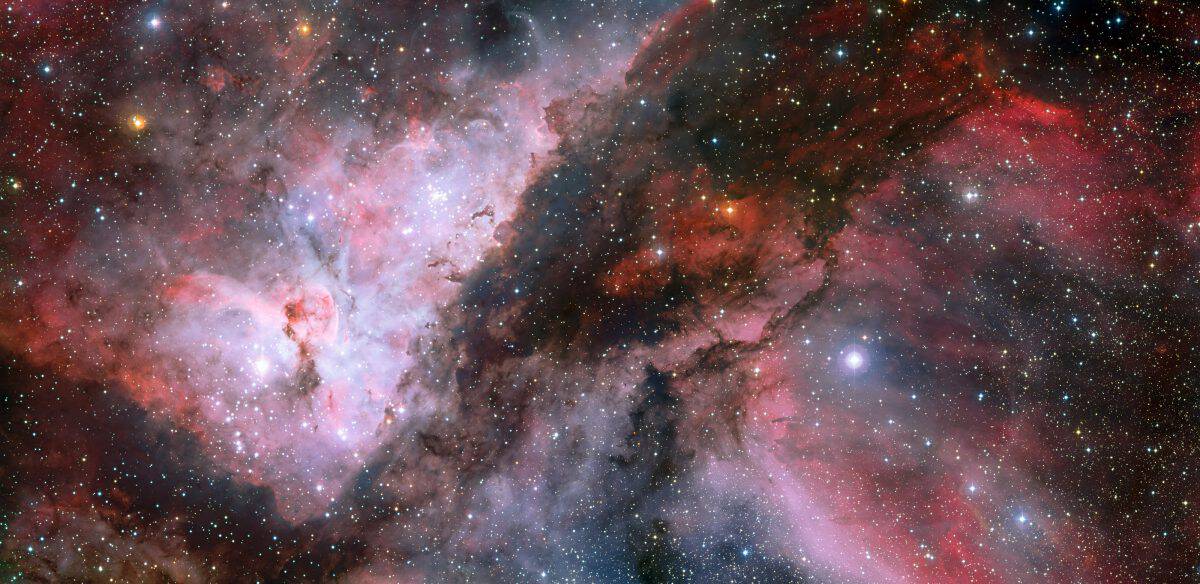The Cosmos with W22
This spectacular panoramic view combines a new image of the field around the Wolf–Rayet star WR 22 in the Carina Nebula (right) with an earlier picture of the region around the unique star Eta Carinae in the heart of the nebula (left). The picture was created from images taken with the Wide Field Imager on the MPG/ESO 2.2-metre telescope at ESO’s La Silla Observatory in Chile.
Distance 8,200 ly
WR 22, also known as V429 Carinae or HR 4188, is an eclipsing binary star system in the constellation Carina. The system contains a Wolf-Rayet(WR) star that is one of the most massive and most luminous stars known, and is also a bright x-ray source due to colliding winds with a less massive O class companion.
The WR 22 system contains two massive stars which orbit every 80 days. The spectrum and luminosity are dominated by the primary, which has a spectral type of WN7h, indicating that it is a WR star on the nitrogen sequence, but also with hydrogen lines in its spectrum. The secondary is an O9 star which appears to have the spectral luminosity class of a giant star, but the brightness of a main sequence star.
There is a shallow eclipse detectable when the primary passes in front of the secondary, which would be classed as the secondary eclipse. However, no primary eclipse is detected, which is believed to be due to the eccentricity of the system placing the stars further apart when the primary eclipse would occur. The separation of the stars varies from over 500 R☉ to less than 150 R☉. This strongly constrains the possible inclinations of the system.
